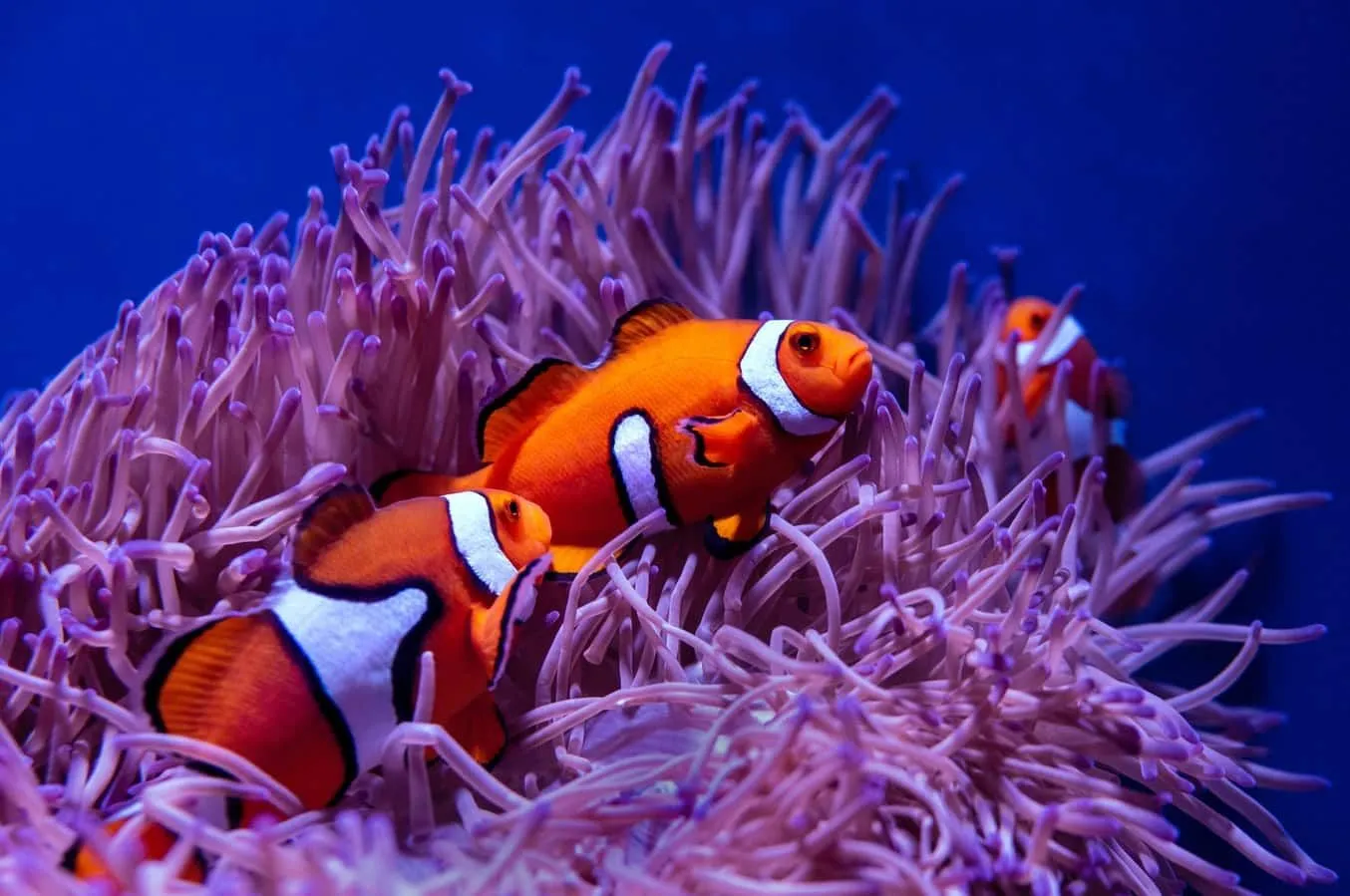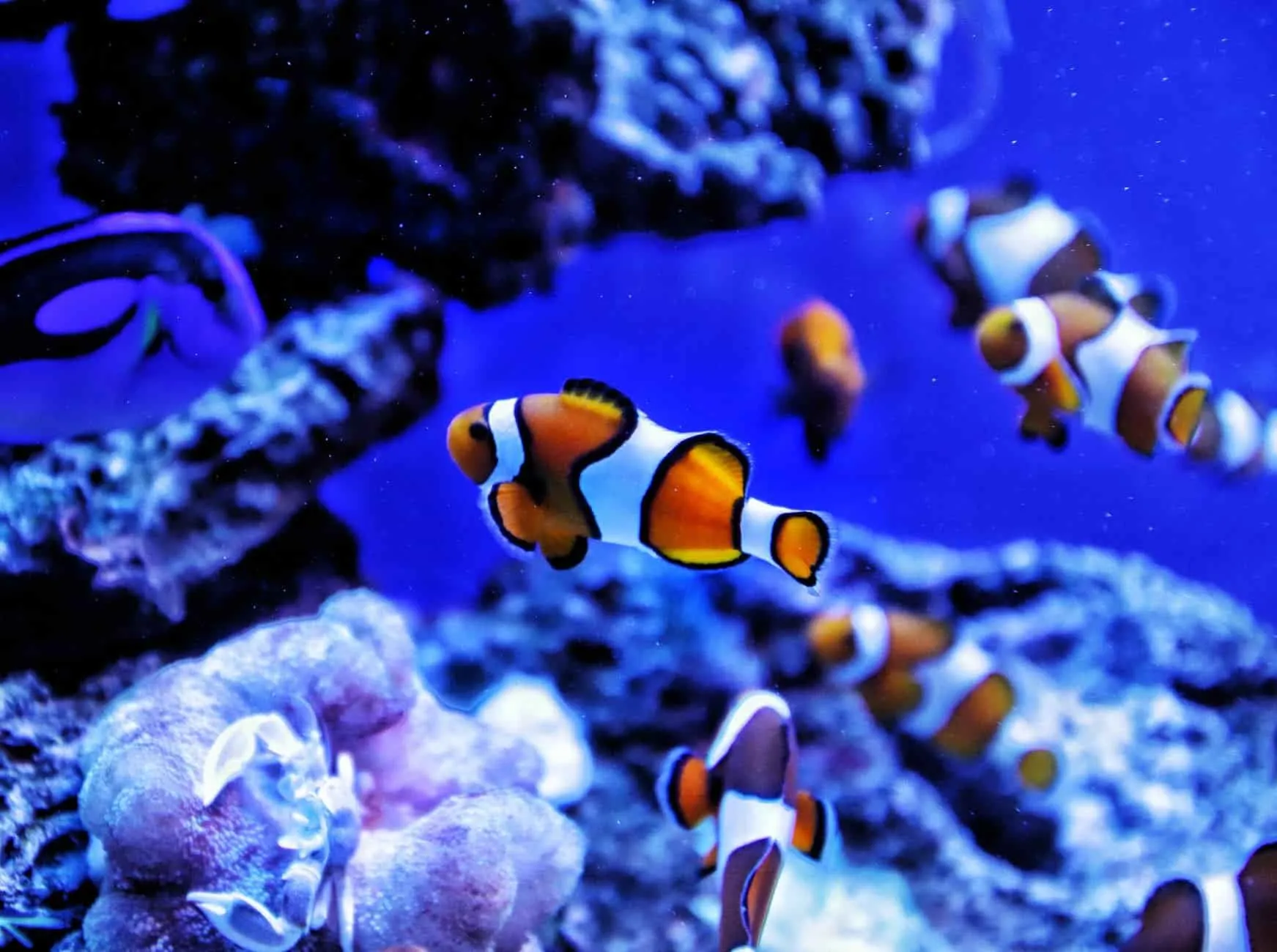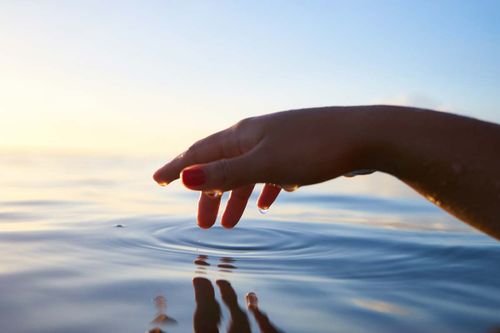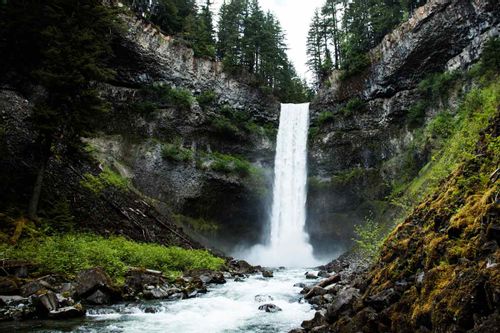FOR ALL AGES
Nemo, the clownfish from the Disney Pixar film 'Finding Nemo', may be the most popular clownfish in the world.
But did you know that there are other fish just like him in real life? Just like in the movie, the real life fish are known to have white and orange stripes.
Perhaps you have a pet clownfish and you want to learn more about it, or you are just interested in cool facts about clownfish. Either way, this compilation is all about clownfish and includes fun and interesting facts about clownfish that are surprising, cool and sometimes, downright weird.
If you like our list on clownfish information and want more fun animal facts, check out our shark facts and jellyfish facts for kids.
Its name may be funny or scary to you, depending on how you view clowns. Here are some fun facts about clownfish that have everything to do with their name.
1. Clownfish took their name from their colorful stripes which look similar to the color of a clown's usual make up.
2. They also make erratic and bouncy movements when they swim, making them appear goofy and clown like.
3. The clownfish's scientific name is Amphiprioninae and it is under the family named Pomacentridae.
4. Clownfish also goes by the name clown anemonefish, the most popular of all the clownfish types is the orange clownfish, also known as the Amphiprion percula.
Aside from the movies and TV screens, where can we find these amazing sea creatures? What is their life like underwater and what do they eat to survive?
5. Clownfish live in the waters of the Southwest Pacific Ocean, the Red Sea, the Indian Ocean and The Great Barrier Reef in Australia and there are currently at least 30 types of clownfish known to man.
6. Clownfish live among the tentacles and parts of another fascinating creature of the sea called the sea anemones, also known as the clownfish's "host".
7. The relationship between clownfish and anemone is truly unique. It is called a symbiotic relationship or symbiosis.

Learn about the clownfish food source with this cool information about clownfish food habits.
8. The anemone serves as a home to the clownfish and protects the clownfish from predators. In turn, the clownfish keeps the anemone alive by eating the parasites that feed on it.
9. There are over 100 types of sea anemone, but only 10 of them can host clownfish.
10. Although anemone is considered poisonous to most creatures it encounters, the clownfish has an extra layer of mucus on its skin, which makes them immune to the poison.
11. Due to their tiny size, clownfish are attacked by some predators like stingrays, sharks, eels and other big fish.
12. The clownfish is omnivorous by nature, feeding on both plants and sea creatures such as plankton, mollusks, phytoplankton, small crustaceans, anemone parasites and algae.

If you're one of those who are on this page because they own a clownfish, you may want to know how long they can live. Some of these clownfish lifespan facts may shock you.
13. A clownfish can live up to 10 years, but in captivity, they can only live for three to five years.
14. The clownfish live in small groups called a school, which is composed of the parents and their offspring.
15. The dominant female will be the biggest fish in the group. When she dies, the dominant male will then turn female to replace her.
16. Hierarchy is important to a clownfish. They respect their leaders and follow the leader, the dominant female.
Ever wonder how clownfish are born? The process is very different from humans or other mammals we know. Just like birds, they lay eggs. They just do it in a slightly different manner under the sea.
17. All clownfish are born hermaphrodites. Meaning they are born male, with an option to switch their gender only when they are to turn from dominant male to the dominant female. Once they turn female, they can never go back to being male clownfish.
18. All clownfish are monogamous. They do not partake in a physical union to reproduce, but the male and female have their own roles and way of courtship.
19. The males prepare a nest for the females to lay eggs on hollow parts of corals, rocks or even anemones. The eggs are guarded and fanned by the dominant male clownfish, increasing the oxygen until they hatch, which should take between six and 10 days on average.
20. The female clownfish lay eggs all year round, but their fertility peaks during a full moon.
Here are some of the coolest clownfish facts about both clownfish and other sea creatures which we saw on the Disney Pixar animated film. We should warn you though, there could be some serious spoilers.
21. Nemo and Marlin from 'Finding Nemo' actually belong to a species of clownfish called false clownfish or false anemonefish. If there is a false clownfish, there is also one called true clownfish. It is called the Amphiprion percula. They are nearly identical, with a slight difference in shape and geographic location.
22. Marlin and Coral, Nemo's parents were protecting over 400 clownfish eggs at the beginning of the movie.
23. As seen in the movie. The great white shark Bruce had several layers of big, sharp teeth that can cut through even some of the biggest sea creatures. This is also accurate in real life as sharks have more or less 300 teeth.
24. We know now that anemone and clownfish have a symbiotic relationship. The reason Marlin survived the journey through the trench is that jellyfish have a similar make-up to a sea anemone. This makes them a danger to the majority of sea creatures due to the poison their bodies emit. However, Marlin being a clownfish, is immune to the poison.
25. Whales actually do have a language in real life, which Dory spoke in the film. They communicate through sonar waves.
26. Dr Sherman, the man who captured Nemo from the Great Barrier Reef, was not a mere recreational diver, but a poacher and a danger to the Great Barrier Reef, where the movie is set.
Sure they may be cute and colourful, and after seeing Disney's 'Finding Nemo', you can't help but want to have one as a pet. The below clownfish facts and information will help you understand what really happens to these fish in captivity. Captivity means being taken out of its natural habitat, which is the ocean. These facts will open your eyes.
27. Instead of living for up to 10 years, the clownfish habitat change will only allow them to live for three to five years.
28. Due to the popularity of Disney's 'Finding Nemo', the number of clownfish kept in tanks and as pets has increased despite the film’s message about the damage caused by keeping them in captivity.
29. The silver lining is, clownfish are still a thriving species and are not in danger of extinction.
30. A clownfish's diet is dependent on its habitat and availability of food. In captivity, clownfish are fed with fish flakes, fish pellets, and other manufactured nutrients.
31. While it's not likely for a clownfish to inflict harm to other clownfish, it will become aggressive when it is hungry or agitated, especially if it is confined in a small space such as an aquarium.
And last but not the least, here are some fun facts that we think are too cool not to include in this list.
32. The longest clownfish species recorded is 7.1 inches, while the tiniest was 4.9 inches.
33. Clownfish are actually bad swimmers, which sounds weird because they are a type of fish. Their swimming pattern is made of sudden outbursts and erratic movement.
Here at Kidadl, we have carefully created lots of interesting family-friendly facts for everyone to enjoy! If you liked our suggestions for clownfish facts then why not take a look at these toucan facts, or bear facts too?
Read The Disclaimer
At Kidadl we pride ourselves on offering families original ideas to make the most of time spent together at home or out and about, wherever you are in the world. We strive to recommend the very best things that are suggested by our community and are things we would do ourselves - our aim is to be the trusted friend to parents.
We try our very best, but cannot guarantee perfection. We will always aim to give you accurate information at the date of publication - however, information does change, so it’s important you do your own research, double-check and make the decision that is right for your family.
Kidadl provides inspiration to entertain and educate your children. We recognise that not all activities and ideas are appropriate and suitable for all children and families or in all circumstances. Our recommended activities are based on age but these are a guide. We recommend that these ideas are used as inspiration, that ideas are undertaken with appropriate adult supervision, and that each adult uses their own discretion and knowledge of their children to consider the safety and suitability.
Kidadl cannot accept liability for the execution of these ideas, and parental supervision is advised at all times, as safety is paramount. Anyone using the information provided by Kidadl does so at their own risk and we can not accept liability if things go wrong.
Kidadl is independent and to make our service free to you the reader we are supported by advertising.
We hope you love our recommendations for products and services! What we suggest is selected independently by the Kidadl team. If you purchase using the buy now button we may earn a small commission. This does not influence our choices. Please note: prices are correct and items are available at the time the article was published.
Kidadl has a number of affiliate partners that we work with including Amazon. Please note that Kidadl is a participant in the Amazon Services LLC Associates Program, an affiliate advertising program designed to provide a means for sites to earn advertising fees by advertising and linking to amazon.
We also link to other websites, but are not responsible for their content.
Was this article helpful?



Browse Category

We’ll send you tons of inspiration to help you find a hidden gem in your local area or plan a big day out.



Check your inbox for your latest news from us. You have subscribed to:
Remember that you can always manage your preferences or unsubscribe through the link at the foot of each newsletter.